Apologies for the unclear title. Although not effective, I couldn't think of a better way to describe this problem.
Here is a sample dataset I am working with
test = data.frame(
Value = c(1:5, 5:1),
Index = c(1:5, 1:5),
GroupNum = c(rep.int(1, 5), rep.int(2, 5))
)
I want to create a new column (called "Value_Standardized") whose values are calculated by grouping the data by GroupNum and then dividing each Value observation by the Value observation of the group when the Index is 1.
Here's what I've come up with so far.
test2 = test %>%
group_by(GroupNum) %>%
mutate(Value_Standardized = Value / special_function(Value))
The special_function would represent a way to get value when Index == 1.
That is also precisely the problem - I cannot figure out a way to get the denominator to be the value when index == 1 in that group. Unfortunately, the value when the index is 1 is not necessarily the max or the min of the group.
Thanks in advance.
Edit: Emphasis added for clarity.
